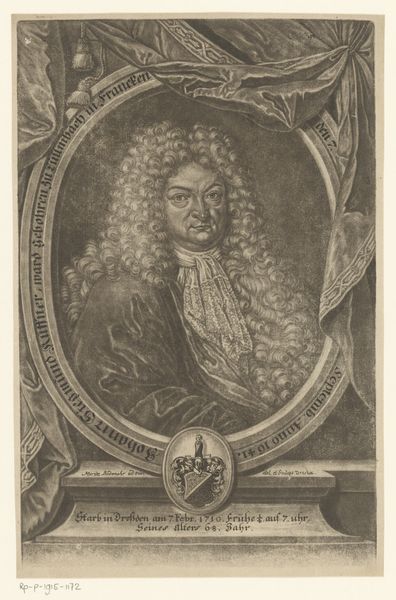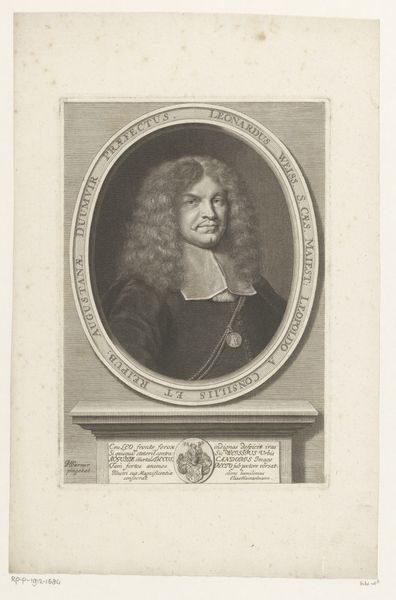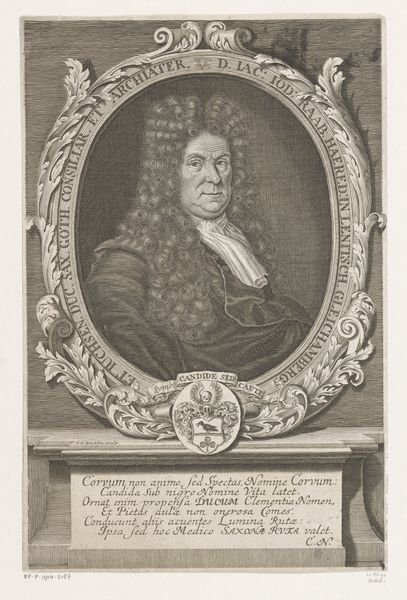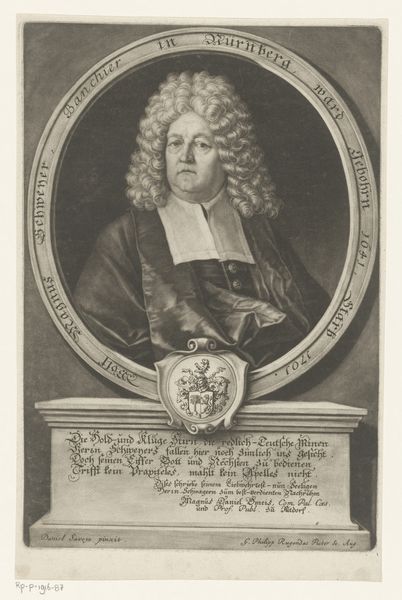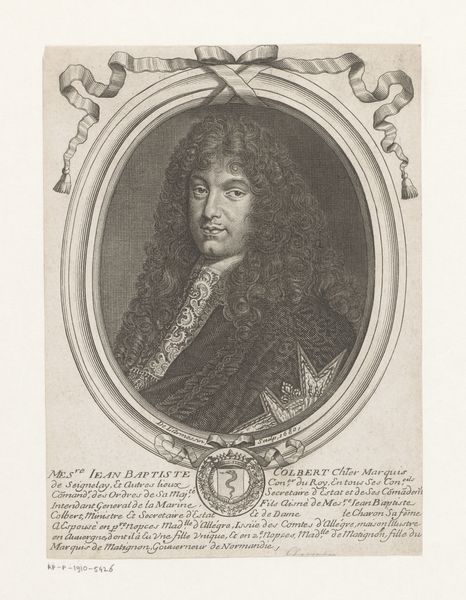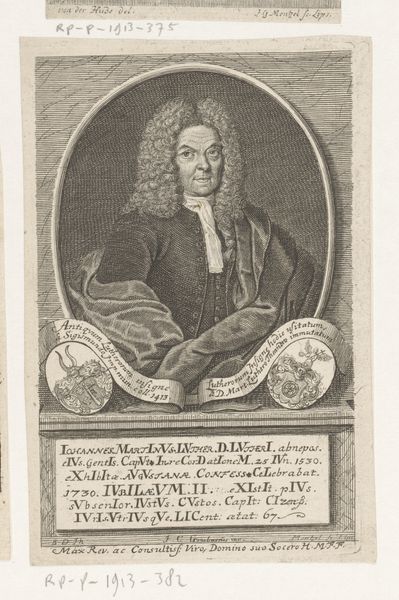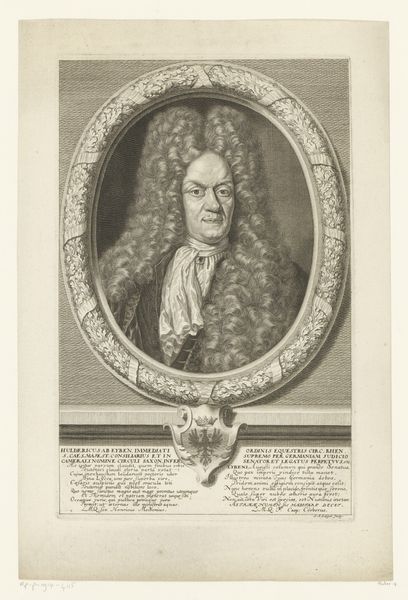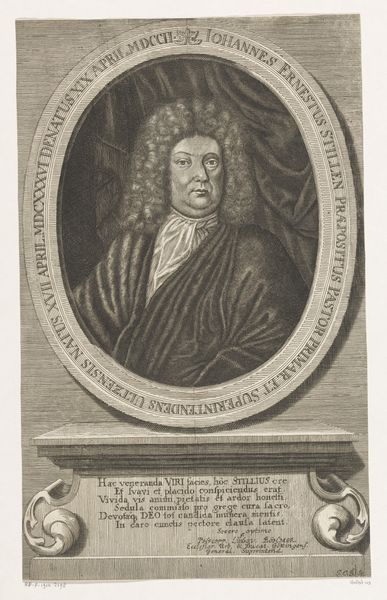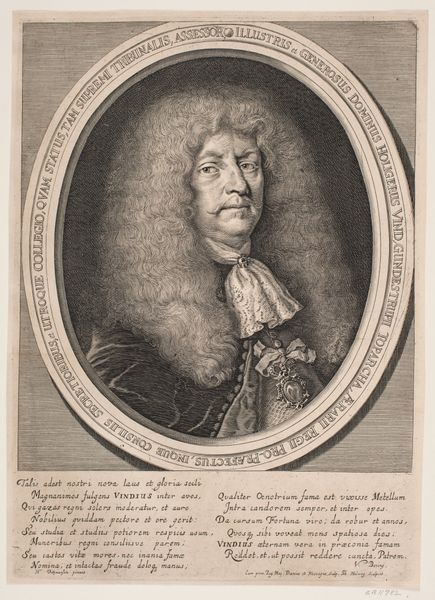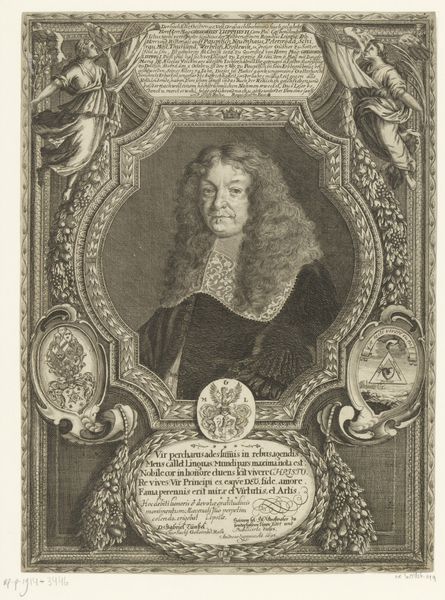
print, engraving
#
portrait
#
baroque
# print
#
engraving
Dimensions: height 392 mm, width 274 mm
Copyright: Rijks Museum: Open Domain
Curator: This engraving, created in 1697, depicts Georg Lorenz Gaap. It resides in the Rijksmuseum's collection and is a remarkable example of Baroque portraiture using printmaking techniques. Editor: My first impression is that it exudes an intense air of formality and controlled power. That wig practically screams 'establishment!' Curator: Indeed. Look closely at the composition—the subject is framed within an oval cartouche, adorned with inscriptions detailing his status as member of the council and Mayor in Imperial Free City of Augsburg, along with his age of 74. Editor: And note the almost claustrophobic tightness of the frame. While signifying importance, it simultaneously reinforces social structures limiting mobility and dictating self-presentation. This piece becomes almost like a document illustrating power structures of the period. Curator: You have to admire the technical skill. The varying line weights create volume and depth, particularly in rendering the elaborate wig, lace jabot, and the texture of his robe. Consider the deliberate contrast between dark areas and areas of highlights; this strategic approach provides for greater visual acuity and detail. Editor: While admiring technical execution, let’s address the obvious: this kind of lavish representation was only possible due to deeply entrenched socio-economic inequalities. Such intricate works glorified privilege built upon systemic oppression, thereby acting as vehicles for normalizing this arrangement to its viewers then, and perhaps us, now. Curator: Perhaps. Still, observe how the artist employs hatching and cross-hatching to model form, a classical approach refined during the Baroque era. This rigorous technique enabled artists like Heckenauer, the man who completed the original for this print, to capture nuanced detail and impart grandeur within such detailed printed pieces. Editor: A necessary reminder of the constraints inherent in representing marginalized groups fairly. Examining pieces like these challenges us to explore the role of artistic expression in preserving systemic prejudices; also, we should consider how our own contextual readings either perpetuate those systems of suppression or effectively disrupt their historic pervasiveness. Curator: Your points bring valuable perspective. But now, it becomes incumbent on the viewer to make some determination; this piece, after all, offers enduring testament regarding art's complexities irrespective of the biases inherent during its historical inception. Editor: Precisely—engagement demands self-awareness regarding preconditioned notions when facing inherited cultural items exhibiting inherent biases… and pieces like this demand a greater, honest assessment about this ongoing influence affecting the here and now, always.
Comments
No comments
Be the first to comment and join the conversation on the ultimate creative platform.
